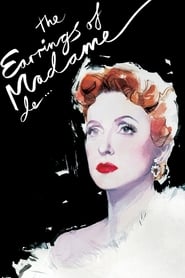Back in the eighteenth century, there was a fashionable genre of novel called the "it narrative", which followed an item around society (such as Hackney carriage or a coin) in order to comment, invariably satirically, on different social classes and contemporary ideas of modernity. Sometimes called a novel of circulation, The Earrings of Madame de... gains even more layers of interest when viewed with this historical telescoping effect, for its post-WW2 nostalgia for the nineteenth-century Belle Époque is, in itself, looking even back to a genre popular in the eighteenth.
The so-called serious man is really futile, because he accepts ready-made justifications for his life; whereas a passionate and profound woman revises established values from moment to moment. She knows the constant tension of unsupported freedom; it puts her in constant danger; she can win or lose all in an instant. It is the anxious assumption of this risk that gives her story the colors of a heroic adventure. And the stakes are the highest there are: the very meaning of existence.
— Simone de Beauvoir: The Second Sex
[For Ophuls,] the roving camera and the visual glissandos were never virtuoso flourishes for their own sake; they were always attached to the movements of characters and revelatory of the movements of their souls.
— Molly Haskell (Criterion)
Synopsis: In late 19th century France, the Countess Louise, wife of a wealthy general, sells the earrings her husband gave her on their wedding day to pay off her secret debts, then claims to have lost them. Her husband quickly learns of the deceit, which is the beginning of many tragic misunderstandings, all involving the earrings, the general, the countess, and her new lover, the Italian Baron Donati.

